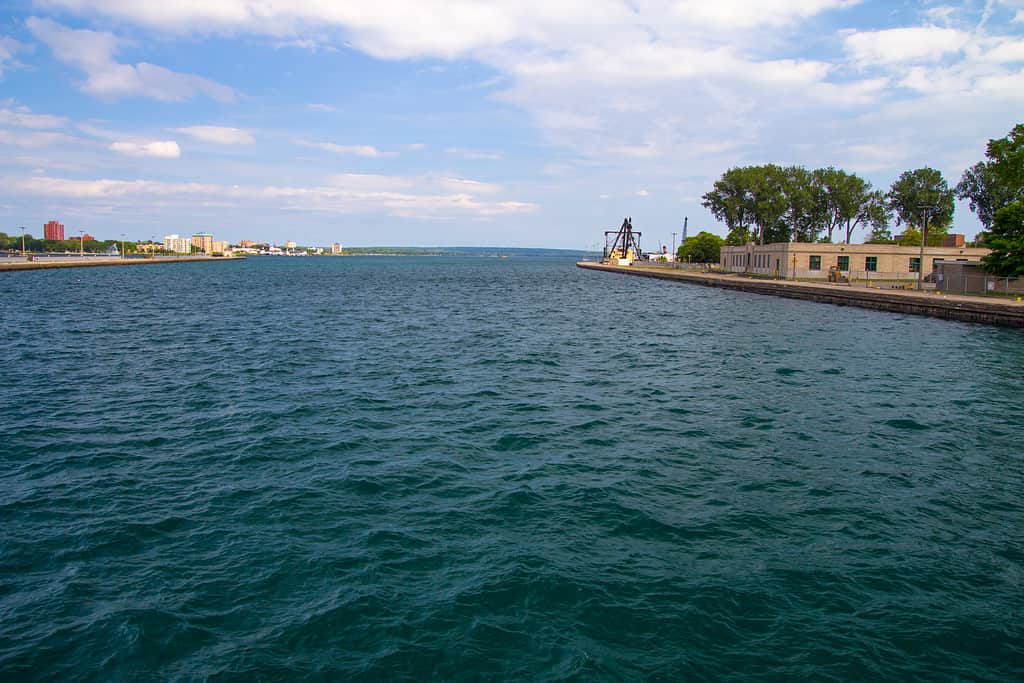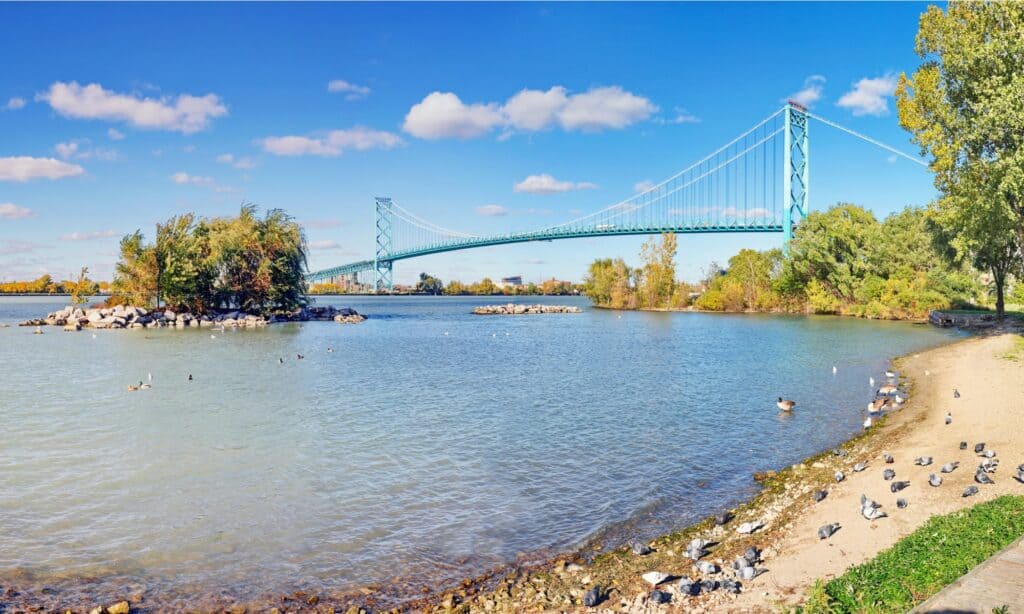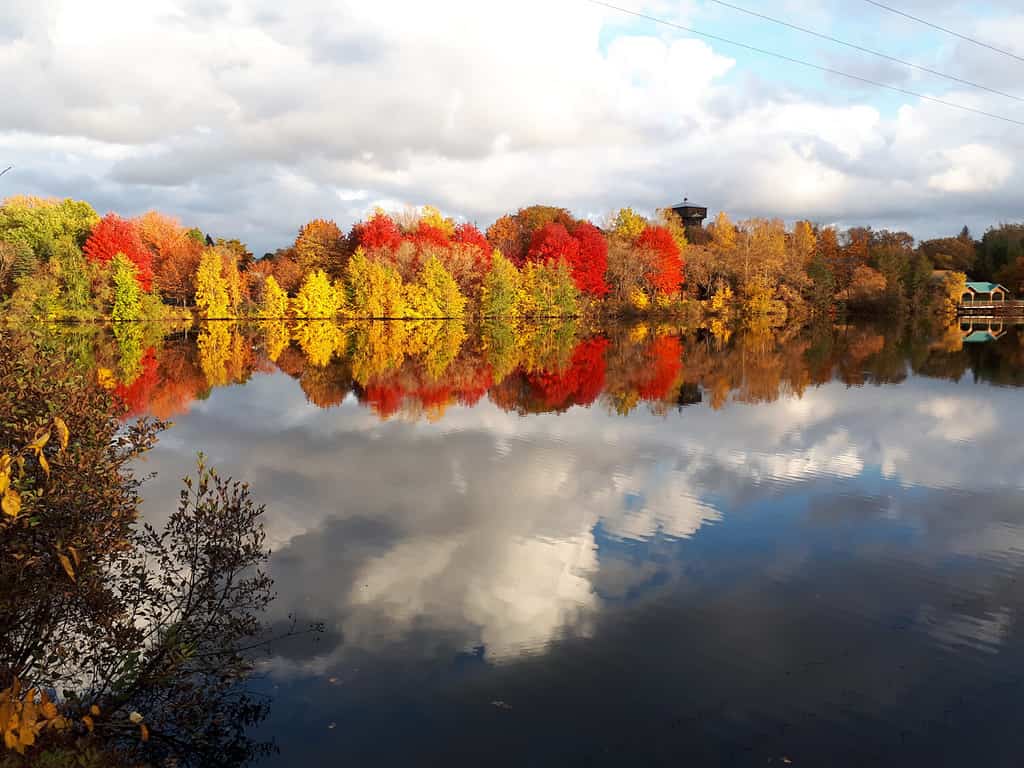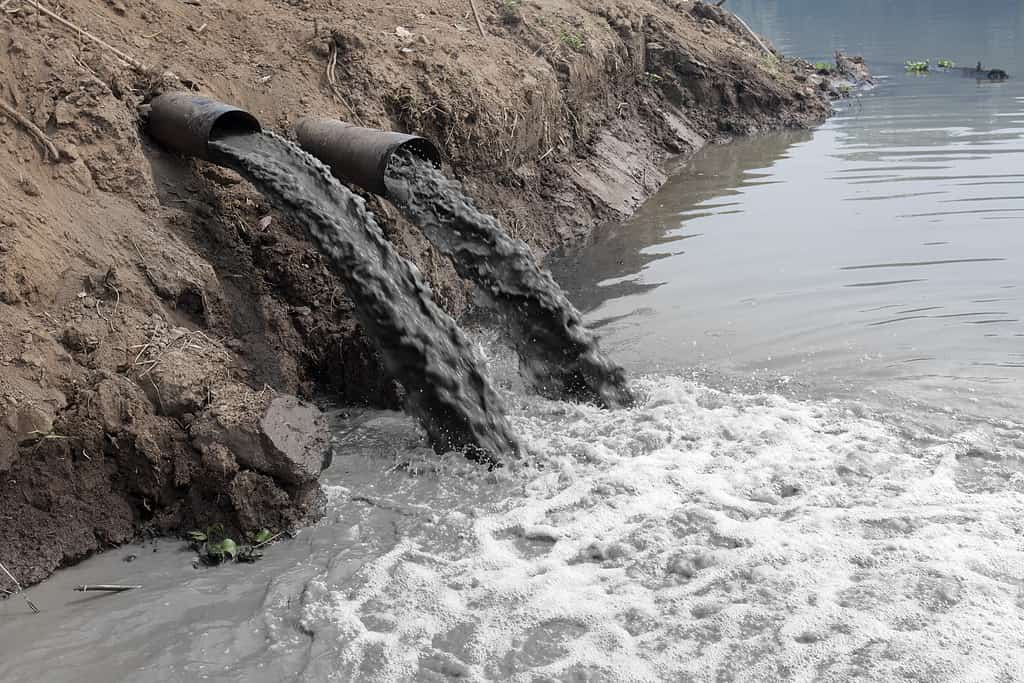Canada’s many rivers have beautiful waterfalls, babbling pools, and teeming wildlife. Unfortunately, the rivers in the southern provinces have become polluted over the last few decades. With more and more people understanding the importance of environmental preservation, it’s critical to know the rivers in most need of help.
Read on to discover the five most polluted rivers in Canada. Also learn what pollutes them, and what steps have been taken by local groups or the government to clean up the quality of the water.

What Causes Water Pollution in Canada?
The majority of water pollution in Canada comes from five main sources:
- Commercial discharge.
- Runoff materials.
- Chemical spills.
- Settling airborne pollutants.
- Accidental or intentional waste dumping.
For discharge, spills, and waste, river currents carry these pollutants downstream. While sometimes diluted, the pollutants barely break down and begin to fill banks and sediment. It disrupts river ecosystems and lessens the quality of potable water in the Canadian wilderness.
Furthermore, the spills that happen include toxic chemicals that natural processes can’t break down. This results in a complete loss of habitat for many aquatic animals.
Yamaska River, Quebec

In the early 2000s, Quebec had 10 of Canada’s most polluted rivers, including the Yamaska.
©Matthew Jacques/Shutterstock.com
In 2016, thousands of fish died in the Yamaska River after a massive sewage dump. The environmental ministry immediately began an investigation and found nutrient pollution from agricultural development, evidence of consistent sewage spills, and regular waste dumping from municipal departments.
Cleanups happen routinely and concerned citizens express their desires to government officials in the town. However, a lack of communication — as well as increases in urban, industrial, and agricultural activities — continue to pollute the lake. It remains one of Quebec’s most polluted lakes today.
Don River, Ontario

Through intense cleanup efforts, the Don River has come close to its original health prior to the 1870s.
©ehrlif/Shutterstock.com
For hundreds of years, the Don River in Ontario has undergone intense pollution dumping from both natural and man-made sources. Because of its convenient location to cities, with the banks butting up against many factories and plants, it’s been an easy site to dump waste since the mid-1800s.
All the way back in 1879, pollution from oil storage and poultry processing plants flowed into the Don River. In the subsequent two centuries, more run-off, sewage, and natural disasters (like Hurricane Hazel) mix unhealthy sediment with man-made pollution.
Fortunately, dedicated cleanup efforts in 2021 began to make a clear difference in water quality. This government-backed cleanup attempts to limit sewage pollution from heavy rainfalls by carrying rainwater and sewage overflow through diverting tunnels. In 2023, an article in the Guardian declared that the river is roaring back to life.
Detroit River, Ontario

The Detroit River runs 28 miles along the U.S. and Canadian border.
©iStock.com/Simplyphotos
When the area surrounding the Detroit River underwent significant industrialization at the turn of the twentieth century, the river became massively polluted by factory runoff and waste. It became so notoriously toxic that The Detroit River Area of Concern was formed for agencies in both the United States and Canada to address the issues. Causes of the pollution included unregulated dumping for generations of chemicals, commercial, industrial, and residential waste, and sewage draining. Not only was the river unsafe for humans; thousands of birds died in the river’s oil slicks during their migrations and so little oxygen existed in the water that fish asphyxiated.
Though a multimillion-dollar dredge in 2001 cleaned up pollutants and began to breathe life back into the waterway, problems remain. However, restoration continues at a slow but steady rate — as indicated by many animals (like eagles, sturgeon, and osprey) who have come back to rebuild habitats in the last 10 years.
Petitcodiac River, New Brunswick

The mayor of Moncton profusely apologizes to the community for the government’s oversight in allowing pollution of the Petitcodiac River to occur.
©glag/Shutterstock.com
In 2002, the city of Moncton came under fire for polluting the Petitcodiac River by letting toxic material from a former landfill leak in for over 10 years. They were fined only $35,000 a year later and the allegation was upheld by officials. It was named the most endangered river in Canada in 2003 by EarthWild International, though steady cleanup efforts have improved its quality significantly.
Later, in 2017, the Petitcodiac Watershed Alliance (PWA) announced that over the last 19 years, they’ve worked to monitor the water quality throughout the watershed and reported declining numbers. Based on their research, the main factor in the water pollution was activities of urban land use. This increases levels of sediment and runoff that impact the quality of water in the Petitcodiac River.
Today, the Petitcodiac River — as well as the surrounding watershed — employs “Riverkeepers” on staff to advocate for the health of the water. Their full-time job is to preserve the integrity of the water and organize solutions to deteriorating conditions.
Okanagan River, British Columbia

Intense sewage dumping and industrial runoff made the Okanagan River one of the most polluted rivers in Canada for nearly a decade in the early 2000s.
©Toa55/Shutterstock.com
In 2003, the Okanagan River ranked as the third most endangered river in Canada regarding pollution. During the research to create the list, biologists and environmentalists focused on rivers that needed protection from sewage and pesticide leachate, mining and logging runoff, and damming. EarthWild International and Wildcanada.net, the two environmental groups that headed up the study, identified multiple threats to the Okanagan River — especially because it runs through Canada’s only desert and hosts 23 nationally-threatened species.
In the following years, the Okanagan Nation Alliance (ONA) worked in collaboration with individuals and governments to organize cleanup. While it’s still not crystal clear, its water quality has improved for locals to swim in certain regions of it.
Summary of the Five Most Polluted Rivers in Canada
| Rank | River |
|---|---|
| 1 | Yamaska River |
| 2 | Don River |
| 3 | Detroit River |
| 4 | Petitcodiac River |
| 5 | Okanagan River |
Work to Reverse the Impact of Canada’s Most Polluted Rivers
The seven most polluted rivers in Canada attribute their pollution to where human activity is more prevalent. Cities, farming operations, and large industrial parks contribute the most to the deteriorating water quality in these rivers, but the Canadian government and other activist groups haven’t given up on clean-up efforts. Weekend initiatives, community-based volunteer programs, and more work diligently to reverse the impact of pollution on these important ecological areas and recreate habitats for the wildlife that depend on them.
The photo featured at the top of this post is © Rich Carey/Shutterstock.com
Thank you for reading! Have some feedback for us? Contact the AZ Animals editorial team.







